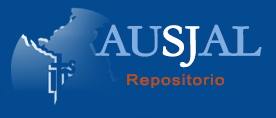| dc.description.abstract | The foundry sector faces the problematic situation of direct competition from the
Chinese market that offers low-cost products and manufacturing capacity for high
volumes. Therefore, companies operating in the foundry sector need to continually
seek alternatives to reduce costs; improve performance; have efficient product
management; lean production; and increase productivity to become competitive,
compared to Chinese companies, which is a complex task and requires the adoption
of strategies to change this scenario, as also occurs in the company analyzed here.
In this context, this study aims to identify how to increase productivity in the fusion
area of a foundry company in the light of Lean Manufacturing supported by discrete
events simulation. To reach the objective, the following were used: the hypothetical deductive method; quantitative applied research, the single and holistic case study
method; and hard modeling using the discrete events simulation method. For data
collection, the observation method was used and data analysis was configured as a
descriptive analysis. The results generated through the combined application of
discrete events simulation in conjunction with the LM tools – Kaizen and VSM –
were: reduction in ingot generation; decrease in melting time (Scenario 3 simulated)
generating increased productivity; reduction in the volume of stock needed in the mill
due to the change of layout in the tap painting leading to a reduction in lead time
according to future VSM. | en |
